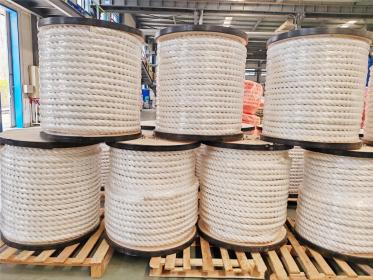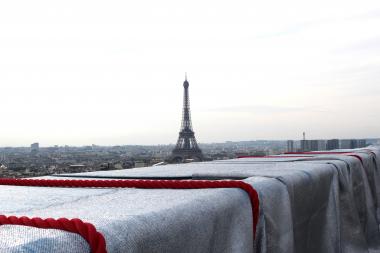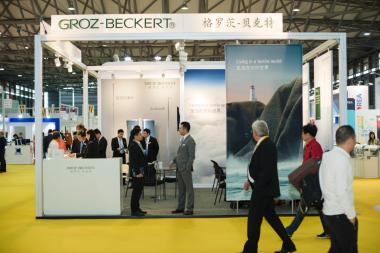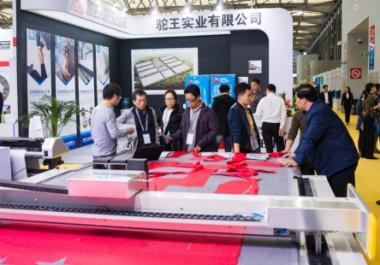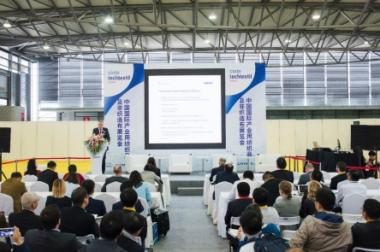Cinte Techtextil China 2023 to launch new Marine Textile Zone
At the crosswinds of China’s 14th Five-Year Plan for the Development of the Marine Economy and its 14th Five-Year Guidance for the Development of the Technical Textiles Industry lies the marine textile sub-sector. Following the government’s directive, the Marine Textile Zone will be unfurled at this year’s fair, taking place from 19 – 21 September 2023 at the Shanghai New International Expo Centre. Multiple exhibitors from across China have confirmed their participation within the zone, which will be comprised of three main parts: green marine science and nautical rope netting innovation display area, the Technology Exchange Forum, and the awards ceremony of the Top 10 Suppliers in the China Rope Net Industry.
The global rope market is predicted to experience a CAGR of 5.6% and grow by over USD 4 billion between 2022 - 2027[1], and suppliers are eager for the chance to meet buyers face to face. In fact, many will use the new zone at Asia’s leading technical textiles and nonwovens fair to do so.
In the green marine and rope netting category, exhibitors will showcase the latest innovations along the marine textile industry chain, anchored by application areas such as marine engineering, marine economy, marine fencing, marine rescue, deep-sea fishing, deep-sea aquaculture, and many more.
Featured exhibitors include:
- Ropenet Group: covering 36 application areas, such as aerospace, marine fisheries, safety protection, and emergency rescue, the Shandong-based company has exported to over 110 countries and regions. Products include ropes, nets, threads, and belts, with new materials and high-performance synthetic fibre spinning ropes forming the core of its business.
- Hunan Xinhai: with its Hunan factory covering 200,000 sqm, its industry-leading rope net production scale ensures it can service multiple sectors such as fisheries, sports, military industry, marine engineering, life-saving protection, and many more. Its extensive network spans Asia, Africa, Europe, and beyond.
- Zhejiang Four Brothers Rope: located in Zhejiang Toumen Port Economic Development Zone, the special chemical fibre rope manufacturer integrates R&D, manufacturing, sales, and after-sales service. After nearly 60 years of operation, the company now has a yearly production capacity of over 15,000 tons.
Other notable exhibitors in this zone include Xuzhou Henghui Braiding Machine; Shandong Jinguan Netting; Jiuli Rope; and Zhejiang Hailun Rope Net.
Meanwhile, the Technology Exchange Forum will focus on policies and regulations, strategic development opportunities, market analysis, product and process innovation, and the promotion and application of marine textiles. A range of well-known international and domestic experts have been invited to deliver comprehensive industry analysis, and unveil oceanic green textile initiatives onsite.
Designed to expand the influence of the rope net industry, the Top 10 Suppliers in the China Rope Net Industry awards will highlight enterprises currently making key contributions. Other fringe events related to this textile sub-sector include the Conference on Textile Applications for Marine Engineering and Fisheries, and the China Nonwovens & Industrial Textiles Association (CNITA) Rope Net Branch Council Meeting.
Lastly, the Marine Textile Zone will also encompass a business negotiation area to facilitate negotiations between key players onsite, set against the backdrop of the innovation display area’s award-winning and patented rope net products. As a whole, the zone is expected to encourage independent innovation in marine science and technology, coordinate the protection and development of marine resources, and help build a modern maritime industrial system.
The fair’s product categories cover 12 application areas, which comprehensively span a full range of potential uses in modern technical textiles and nonwovens. These categories also cover the entire industry, from upstream technology and raw materials providers to finished fabrics, chemicals and other solutions. This scope of product groups and application areas ensures that the fair is an effective business platform for the entire industry.
The fair is organised by Messe Frankfurt (HK) Ltd; the Sub-Council of Textile Industry, CCPIT; and the China Nonwovens & Industrial Textiles Association (CNITA).
Messe Frankfurt (HK) Ltd


